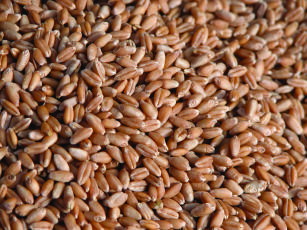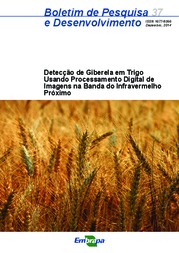FAST METHODS TO ASSESS TECHNOLOGICAL QUALITY INDICATORS AND CONTAMINANTS IN GRAINS
FAST METHODS TO ASSESS TECHNOLOGICAL QUALITY INDICATORS AND CONTAMINANTS IN GRAINS

Photo: KURTZ, Paulo
Legislation requirements and consumer demands increasingly push for food safety and quality assurances. Nowadays, generally speaking, quality indicators and contaminants are individually determined in specialized laboratories, which requires long procedures and expensive reagents and makes the analysis of large volumes of samples impracticable. The quick obtainment of analysis results to identify the presence of contaminants and characterize the technological suitability of grains and derivatives is fundamental to make post-harvest systematic monitoring and lot segregation feasible. That is an important strategy to increase competitiveness and sustainability in rice, maize, wheat, and soybean production chains, and to facilitate product segregation according to market demands. The project proposal is included in Embrapa's Array QUALIPOS - Technological strategies and innovation for post-harvest grain quality, which aims at strengthening research in the area of post-harvest. This area was also prioritized in the Safe Food portfolio, in the theme "Techniques to detect physical, chemical and biological contaminants”. The goal of the project is to develop, adapt and validate fast, robust and economic analytical methods to evaluate quality indicators and contaminants, aiming at segregating grains according to their technological suitability and sanitary quality. There will be a priority on the development of fast methodologies to determine the following indicators: moisture, protein, grains with disease symptoms, germinated grains, mycotoxins, insect fragments and impurities. Amongst the fast, robust alternative techniques with adjusted cost-benefit that are available for the assessment of technological quality indicators and indicators of contaminants in grains, the most promising are: near-infrared spectroscopy (NIRS); NIRS associated with hyperspectral imaging; fast detection kits for the quantification of mycotoxins; and methods based on digital images as X-Ray for insect fragments and impurities. Fast methodologies will thus be developed and validated based on the results obtained through reference methods. Mathematical and statistical tools will be applied to the validation of results obtained from the fast methods, to ensure precision, reproducibility and reliability. The availability of expedite methodologies for the routine of identifying technological suitability and quantifying contaminants helps to define the most appropriate management of grain lots in every stage of the production chain, making traceability possible and contributing to the sale of safe, quality foods to consumers.
Ecosystem: Cerrados Region, Pinheirais Region
Status: Completed Start date: 02/2015 Conclusion date: 01/2019

